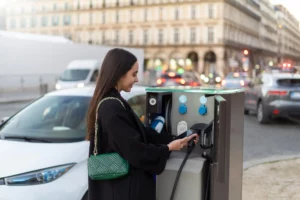
Home / EV Charging News / Essential Considerations for Parking Facilities Installing EV Charging Stations
With the rise of electric vehicles (EVs) and an increased demand for charging infrastructure, parking facilities are increasingly looking to install EV charging stations. This investment can benefit parking facilities by attracting new customers and offering modern amenities, but it also comes with specific challenges and requirements. Understanding key considerations before installation is crucial for optimizing performance, efficiency, and customer satisfaction.
Before installing EV charging stations, it’s essential to understand the different types of chargers available. There are generally three levels of charging stations:
Choosing the right type of EV charger for your facility depends on the expected usage patterns and customer needs. Parking facilities with longer stay durations may opt for Level 2 chargers, while those aiming to serve short-term visitors may benefit from installing Level 3 fast chargers.
One of the most critical considerations for parking facilities installing EV chargers is the available power capacity. EV charging stations, especially Level 3 chargers, require significant electrical infrastructure. Facilities must evaluate whether their current grid connection can handle the additional load or if upgrades are needed.
In some cases, it may be necessary to work with utility providers to ensure adequate power supply, which can affect both installation costs and timelines. Conducting a thorough power assessment beforehand ensures that the charging stations can function without causing disruptions to other electrical systems.
When installing EV chargers, location is key to maximizing usability and customer satisfaction. Charging stations should be placed in easily accessible areas with clear signage and reserved parking spots to avoid misuse by non-EV drivers. Consider placing chargers near entrances or exits, where they are more visible and convenient for drivers.
In addition to accessibility, it’s important to consider the layout and how many charging stations the facility can accommodate. The number of chargers should be balanced with the facility’s overall capacity and expected demand for EV charging.
Before installing EV charging stations, it’s important to review and comply with local regulations and building codes. Many regions have specific rules governing the installation of EV chargers, including requirements for permits, zoning, and safety standards. Failure to comply with these regulations can result in fines or the need to modify or remove installed chargers.
In addition, some municipalities offer incentives for installing EV charging stations, such as tax credits or grants. Exploring available incentives can help offset installation costs and encourage faster implementation.
For parking facilities, the installation of EV chargers opens up opportunities for additional revenue streams. There are several payment models to consider:
Selecting the right model depends on the goals of the parking facility—whether it’s to generate direct revenue or use EV charging as a value-added service.
Maintaining EV charging stations is essential for ensuring reliability and customer satisfaction. Regular inspections should be conducted to ensure chargers are in good working order, and any faults should be addressed quickly. Maintenance contracts with the charger manufacturer or a service provider can help ensure that issues are resolved promptly.
Facilities should also consider the impact of weather and wear on the chargers. For outdoor chargers, protection from the elements is necessary, whether through overhead canopies or more durable charging units. Keeping the chargers clean and functional is key to retaining users and preventing operational downtimes.
As the adoption of EVs continues to grow, parking facilities should consider future expansion when installing EV charging stations. The demand for charging points is likely to increase in the coming years, and preparing the electrical infrastructure for additional chargers can save time and money in the long term.
Facilities should also consider installing smart EV chargers that can adapt to future technological advancements. Smart chargers can integrate with parking management systems, offer dynamic pricing, and even communicate with the electrical grid to optimize energy use during peak demand periods.
Installing EV charging stations in parking facilities is a strategic decision that offers numerous benefits, from attracting new customers to generating revenue. By considering factors such as charger type, power capacity, location, compliance with local regulations, payment models, and maintenance needs, parking facility operators can ensure a successful and sustainable EV charging installation. Future-proofing these installations further ensures that they can meet growing demand and stay ahead of emerging trends in EV infrastructure.
